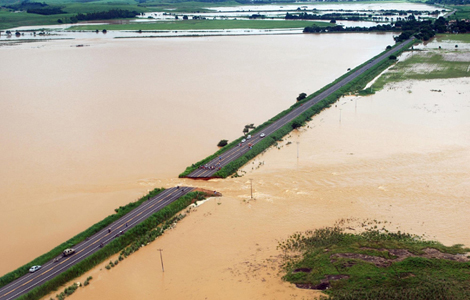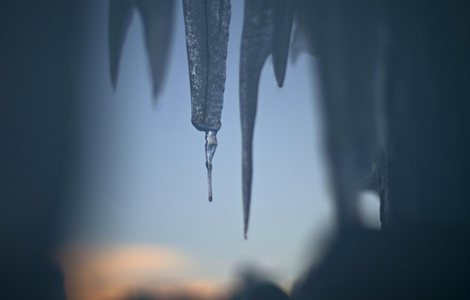Beijing to release PM 2.5 data
Updated: 2012-01-07 08:09
By Zheng Xin (China Daily)
|
|||||||||
BEIJING - Just before Spring Festival this year, the capital city will start releasing data about the amount of tiny particulate matter that is detected in the air.
The Beijing Municipal Environmental Protection Bureau said it plans for the first time to begin releasing information gathered from efforts to detect the presence of PM 2.5 (particulate matter smaller than 2.5 micrometers). In keeping with other Chinese cities' decisions to tell the public more about airborne pollutants, the bureau will also release data about sulfur dioxide, nitrogen dioxide and larger particles.
The policy change comes after the Ministry of Environmental Protection announced at the end of 2011 that it would adopt a stricter index for gauging air quality, a decision made partly in response to public criticism about the standards that are now used to detect pollution.
Liu Qi, Party chief for Beijing, said the capital has done much to make its air cleaner in recent years. But if it wants to meet the public's expectations, it must go much farther, he said.
Liu said Beijing will take several steps to further improve the city's air: ensuring that more clean sources of energy are used, preventing dust from leaving construction sites and strictly controlling emissions of industrial pollutants.
Besides tightening the standards governing the release of pollutants, China's revised Environmental Air Quality Standards said Beijing should begin monitoring PM 2.5 and ozone density as early as 2016. Meanwhile, 2012 is the year specified for cities in the Beijing-Tianjin-Hebei region or in the Yangtze or Pearl river deltas, as well as for Chongqing and provincial capitals.
By the end of 2011, many cities said they planned to begin publishing information about local PM 2.5 readings in 2012. Among them were Qingdao in Shandong province, Dalian in Liaoning province and Guangzhou in Guangdong province, as well as Shanghai and Tianjin.
"It is absolutely a good thing that the government finally plans to make these readings public," said Yang Yanli, 25, a Beijing accountant. "I hope they'll take measures to fundamentally improve the air, such as shutting down the companies that are the worst polluters."
"It's definitely a step forward in improving the city's air quality, even though the capital is not doing as much as some of the other cities," said Wang Qiuxia, a researcher at Green Beagle, an environmental protection NGO based in Beijing.
Even though the Beijing Municipal Environmental Monitoring Center has collected data on PM 2.5 for five years, it has not made regular announcements about its findings, said Wei Qiang, an engineer at the center.
Wang said the capital should do more to teach the public about the dangers of PM 2.5 - especially the old and children.
"For example, the capital could come up with rules that would prevent students from doing things outdoors when the readings reach a certain level."
Experts have found that particulate matter - especially PM 2.5 - can enter easily into the alveoli, the small sack-like structures inside the lungs.
Dong Liangjie, a former environmental scientist at University of Hawaii, said the old, the young, the pregnant and those suffering asthma and cardiovascular diseases are especially vulnerable to PM 2.5.
"The important thing is not to simply publicize the figures, but also to reduce the amount of pollutants being released," said Wang.
Du Shaozhong, deputy director of the Beijing Municipal Environmental Protection Bureau, said the government has taken several measures to clean up the air. It has punished construction sites that release large amounts of dust, shut down coal-fired boilers in central Beijing and forced off the road old vehicles that gave off large amounts of emissions.
The bureau said the city has begun to establish a monitoring network that will be used to detect PM 2.5.
It said the network could be completed by the end of Spring Festival.
Hot Topics
Kim Jong-il, Mengniu, train crash probe, Vaclav Havel, New Year, coast guard death, Internet security, Mekong River, Strait of Hormuz, economic work conference
Editor's Picks

|

|

|

|

|

|







